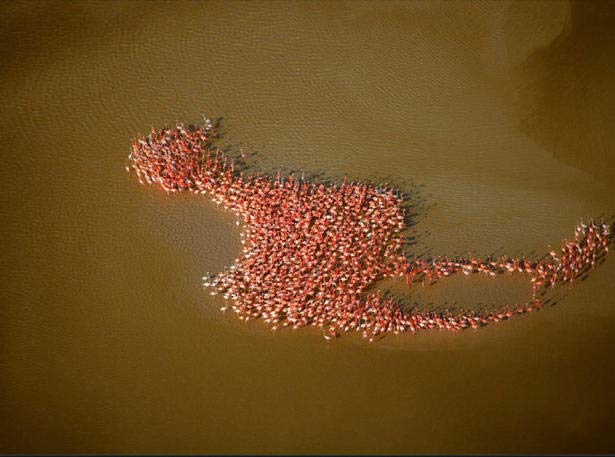
|
|
|
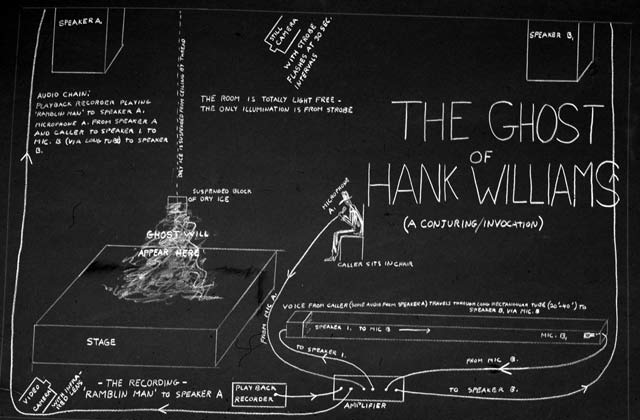
The World in 2036
Most of the technologies that are now 25 years old or more will be around; almost all of the younger ones “providing efficiencies” will be gone, either supplanted by competing ones or progressively replaced by the more robust archaic ones. So the car, the plane, the bicycle, the voice-only telephone, the espresso machine and, luckily, the wall-to-wall bookshelf will still be with us.
The world will face severe biological and electronic pandemics, another gift from globalisation. (…)
Companies that are currently large, debt-laden, listed on an exchange and paying bonuses will be gone. Those that will survive will be the more black swan-resistant—smaller, family-owned, unlisted on exchanges and free of debt. There will be large companies then, but these will be new—and short-lived. (…)
Science will produce smaller and smaller gains in the non-linear domain, in spite of the enormous resources it will consume; instead it will start focusing on what it cannot—and should not—do.
{ Nassim Taleb| Continue reading }
artwork { David Askevold, The Ghost Of Hank Williams, 1979 }
economics, future, ideas |
November 26th, 2010

What is 357 times 289? No pencils allowed. No calculators. Just use your brain. (…)
The brain is, in the words of neuroscientist Floyd Bloom, “the most complex structure that exists in the universe.” Its trillions of connections let it carry out all sorts of sophisticated computations in very little time. You can scan a crowded lobby and pick out a familiar face in a fraction of a second, a task that pushes even today’s best computers to their limit. Yet multiplying 357 by 289, a task that demands a puny amount of processing, leaves most of us struggling.
For psychologists, this kind of mental shortcoming is like a crack in a wall. They can insert a scientific crowbar and start to pry open the hidden life of the mind. The fact that we struggle with certain simple tasks speaks volumes about how we are wired. It turns out the evolution of our complex brain has come at a price: Sometimes we end up with a mental traffic jam in there.
{ Discover | Continue reading }
photo { RJ Shaughnessy }
brain, science |
November 26th, 2010

I wondered for probably the millionth time why I am always running late.
This time, I vowed, I was going to find out.
I turned to an obscure field of neuroscience for answers. The scientists who work on the problem of time in the brain sometimes refer to their area of expertise as “time perception” or “clock timing.” What they’ve discovered is that your brain is one of the least accurate time measurement devices you’ll ever use. And it’s also the most powerful.
When you watch the seconds tick by on a digital watch, you are in the realm of objective time, where a minute-long interval is always 60 seconds. But to your brain, a minute is relative. Sometimes it takes forever for a minute to be over. That’s because you measure time with a highly subjective biological clock.
Your internal clock is just like that digital watch in some ways. It measures time in what scientists call pulses. Those pulses are accumulated, then stored in your memory as a time interval. Now, here’s where things get weird. Your biological clock can be sped up or slowed down by anything from drugs to the way you pay attention. If it takes you 60 seconds to cross the street, your internal clock might register that as 50 pulses if you’re feeling sleepy. But it might register 100 pulses if you’ve just drunk an espresso. That’s because stimulants literally speed up the clock in your brain (more on that later). When your brain stores those two memories of the objective minute it took to cross the street, it winds up with memories of two different time intervals.
And yet, we all have an intuitive sense of how long it takes to cross a street. But how do we know, if every time we do something it feels like it a slightly different amount of time? The answer, says neuroscientist Warren Meck, is “a Gaussian distribution” - in other words, the points on a bell curve. Every time you want to figure out how long something is going to take, your brain samples from those time interval memories and picks one. (…)
Your intuitive sense of how much time something will take is taken at random from many distorted memories of objective time. Or, as Meck puts it, “You’re cursed to be walking around with a distribution of times in your head even though physically they happened on precise time.”
Your internal clock may be the reason why you can multitask. Because nobody - not even the lowly rat - has just one internal clock going at the same time.
At the very least, you’ve got two internal clocks running. One is the clock that tracks your circadian rhythms, telling you when to go to sleep, wake up, and eat. This is the most fundamental and important of all your internal clocks, and scientists have found it running even in organisms like green algae. The other clock you’ve likely got running is some version of the interval time clock I talked about earlier - the one that tells you how long a particular activity is going to take.
{ io9 | Continue reading }
photo { Logan White }
neurosciences, time |
November 26th, 2010

Imagine American history without organized crime. (…)
In Chicago and New York, Italian and Jewish gangsters operated many of the most important early jazz clubs. Al Capone, who controlled several of the clubs in Chicago that introduced jazz to mainstream audiences, was an aficionado of the music and was the first to pay performers a better than subsistence wage. (…) According to the scholar Jerome Charyn, “There would have been no ‘Jazz Age,’ and very little jazz, without the white gangsters who took black and white jazz musicians under their wing.” (…)
Though famous for their ultra-masculinity, gangsters were nonetheless instrumental in fostering and protecting the gay subculture during the hostile years of World War II and the 1950s. Vito Genovese and Carlo Gambino, leaders of the largest and most powerful crime families in New York, began investing in gay bars in the early 1930s.
By the 1950s, most of the gay bars in New York were owned by the mob. Because of the mafia’s connections with the police department and willingness to bribe officers, patrons of mob-owned bars were often protected from the police raids that dominated gay life in the 1950s.
{ Thaddeus Russell | Continue reading }
economics, flashback |
November 26th, 2010
giraffe, marketing, video |
November 26th, 2010
animals, photogs |
November 26th, 2010

AlphaSigma
Hey Guys,
I need some ideas for what I could do with a group of Senior High girls for a ‘girls night’ out on a Friday night.
Time: 5-6 Hours (6:00 pm - Midnight)
Has to be affordable (No professional sports games, etc.)
Thanks.
jthomas1600
Every time there’s been a progressive dinner for any group we’ve been involved in the kids seem to have a good time. It can be all restaurants, homes, or a combination of the two. One thing nice about going to peoples homes is it gives them a chance to be involved with the youth. Often times it will be parents of kids in the youth group and it gives everyone a chance to get to know eachother a little better. Six hours is a long time for a progressive dinner so you could just start with that and then end the night with a late movie, bowling, mini golf etc.
Scavenger hunts seem to be pretty popular too.
{ Christian Guitar Forum }
guide, social networks |
November 26th, 2010
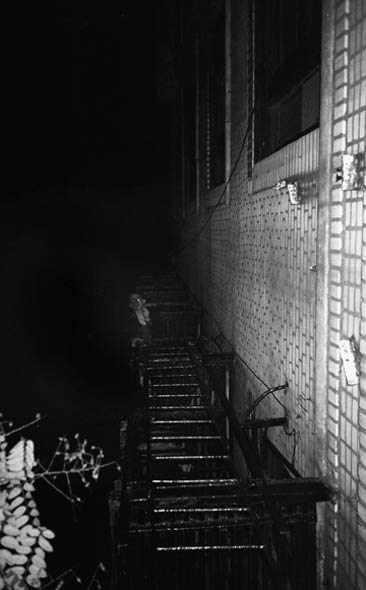
Circular patterns within the cosmic microwave background suggest that space and time did not come into being at the Big Bang but that our universe in fact continually cycles through a series of “aeons.” That is the sensational claim being made by University of Oxford theoretical physicist Roger Penrose, who says that data collected by NASA’s WMAP satellite support his idea of “conformal cyclic cosmology”. This claim is bound to prove controversial, however, because it opposes the widely accepted inflationary model of cosmology.
According to inflationary theory, the universe started from a point of infinite density known as the Big Bang about 13.7 billion years ago, expanded extremely rapidly for a fraction of a second and has continued to expand much more slowly ever since, during which time stars, planets and ultimately humans have emerged. That expansion is now believed to be accelerating and is expected to result in a cold, uniform, featureless universe.
Penrose, however, takes issue with the inflationary picture and in particular believes it cannot account for the very low entropy state in which the universe was believed to have been born – an extremely high degree of order that made complex matter possible. He does not believe that space and time came into existence at the moment of the Big Bang but that the Big Bang was in fact just one in a series of many, with each big bang marking the start of a new “aeon” in the history of the universe.
{ PhysicsWorld | Continue reading }
related { In an experiment to collide lead nuclei together at CERN’s Large Hadron Collider physicists discovered that the very early Universe was not only very hot and dense but behaved like a hot liquid. }
photo { Young Kyu Yoo }
related:


{ The Scale of the Universe }
space, theory, time |
November 26th, 2010

{ Ernst Haeckel, Kunstformen der Natur, 1899-1904 | Ernst Haeckel (1834 – 1919) was an eminent German biologist, naturalist, philosopher, physician, professor and artist who discovered, described and named thousands of new species, mapped a genealogical tree relating all life forms, and coined many terms in biology, including ecology. | Wikipedia | Continue reading }
Linguistics, flashback, science, visual design |
November 26th, 2010

In the 1940s, the Dutch psychologist Adrian de Groot performed a landmark study of chess experts. Although de Groot was an avid chess amateur – he belonged to several clubs - he grew increasingly frustrated by his inability to compete with more talented players. De Groot wanted to understand his defeats, to identify the mental skills that he was missing. His initial hypothesis was that the chess expert were blessed with a photographic memory, allowing them to remember obscure moves and exploit the minor mistakes of their opponents.
De Groot’s first experiment seemed to confirm this theory: He placed twenty different pieces on a chess board, imitating the layout of a possible game. Then, de Groot asked a variety of chess players, from inexperienced amateurs to chess grandmasters, to quickly glance at the board and try to memorize the location of each piece. As the scientists expected, the amateurs drew mostly blanks. The grandmasters, however, easily reproduced the exact layout of the game. The equation seemed simple: memory equals talent.
But then de Groot performed a second experiment that changed everything. Instead of setting the pieces in patterns taken from an actual chess game, he randomly scattered the pawns and bishops and knights on the board. If the best chess players had enhanced memories, then the location shouldn’t matter: a pawn was still a pawn. To de Groot’s surprise, however, the grandmaster edge now disappeared. They could no longer remember where the pieces had been placed.
For de Groot, this failure was a revelation, since it suggested that talent wasn’t about memory – it was about perception. The grandmasters didn’t remember the board better than amateurs. Rather, they saw the board better, instantly translating the thirty-two chess pieces into a set of meaningful patterns. They didn’t focus on the white bishop or the black pawn, but instead grouped the board into larger strategies and structures, such as the French Defense or the Reti Opening.
This mental process is known as “chunking” and it’s a crucial element of human cognition. As de Groot demonstrated, chess grandmasters automatically chunk the board into a set of known patterns, which allow them to instantly sort through the messy details of the game. And chunking isn’t just for chess experts: While reading this sentence, your brain is effortlessly chunking the letters, grouping the symbols into lumps of meaning. As a result, you don’t have to sound out each syllable, or analyze the phonetics; your literate brain is able to skip that stage of perception. This is what expertise is: the ability to rely on learned patterns to compensate for the inherent limitations of information processing in the brain. As George Miller famously observed, we can only consciously make sense of about seven bits of information (plus or minus two) at any given moment. Chunking allows us to escape this cognitive trap.
{ Wired | Continue reading }
brain, chess, memory, neurosciences |
November 26th, 2010

{ Did you know that the most likely day of the year to be broken up with is the first Monday in December? | Lee Byron | more | Thanks Glenn }
relationships |
November 26th, 2010

Light is special. In our everyday experience it behaves like a wave, which gets reflected, refracted and shows interference with other light of the same wavelength.
At the same time, light also consists of particles, so-called photons.
This duality is quite fundamental: the Hanbury Brown and Twiss experiment for example only works because of the particle-like properties of light.
This amazing and perhaps confusing duality, where light in one experiment appears to be a wave and in others it behaves like particles, is now laid bare in a paper published in Nature.
There, Jan Klaers, Martin Weitz and colleagues from the University of Bonn in Germany take one of the classical properties of light waves and turn it upside down — by demonstrating a related effect that only works when considering the particle qualities of light.
{ Joerg Heber | Continue reading }
photo { Valerie Chiang }
mystery and paranormal, science |
November 24th, 2010
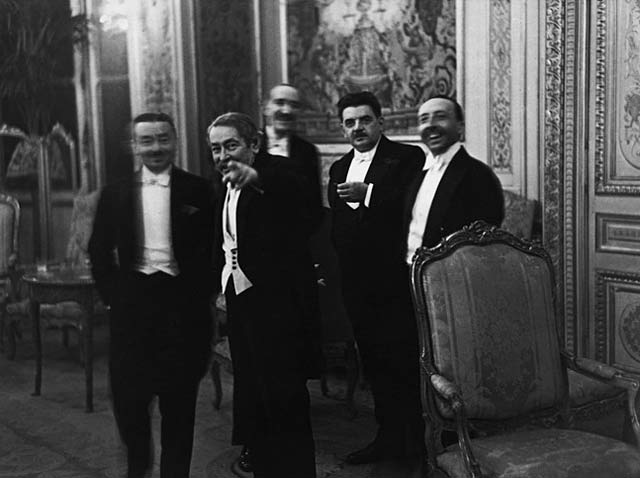
What does it mean to think? Can machines think, or only humans? These questions have obsessed computer science since the 1950s, and grow more important every day as the internet canopy closes over our heads, leaving us in the pregnant half-light of the cybersphere. Taken as a whole, the net is a startlingly complex collection of computers (like brain cells) that are densely interconnected (as brain cells are). And the net grows at many million points simultaneously, like a living (or more-than-living?) organism. It’s only natural to wonder whether the internet will one day start to think for itself. (…)
Today’s mainstream ideas about human and artificial thought lead nowhere. (…) Here are three important wrong assumptions.
Many people believe that “thinking” is basically the same as “reasoning.”
But when you stop work for a moment, look out the window and let your mind wander, you are still thinking. Your mind is still at work. This sort of free-association is an important part of human thought. No computer will be able to think like a man unless it can free-associate.
Many people believe that reality is one thing and your thoughts are something else. Reality is on the outside; the mental landscape created by your thoughts is inside your head, within your mind. (Assuming that you’re sane.)
Yet we each hallucinate every day, when we fall asleep and dream. And when you hallucinate, your own mind redefines reality for you; “real” reality, outside reality, disappears. No computer will be able to think like a man unless it can hallucinate.
Many people believe that the thinker and the thought are separate. For many people, “thinking” means (in effect) viewing a stream of thoughts as if it were a PowerPoint presentation: the thinker watches the stream of his thoughts. This idea is important to artificial intelligence and the computationalist view of the mind. If the thinker and his thought-stream are separate, we can replace the human thinker by a computer thinker without stopping the show. The man tiptoes out of the theater. The computer slips into the empty seat. The PowerPoint presentation continues.
But when a person is dreaming, hallucinating — when he is inside a mind-made fantasy landscape — the thinker and his thought-stream are not separate. They are blended together. The thinker inhabits his thoughts. No computer will be able to think like a man unless it, too, can inhabit its thoughts; can disappear into its own mind.
What does this mean for the internet: will the internet ever think? Will an individual computer ever think?
{ David Gelernter/Edge | Continue reading }
photo { Aristide Briand photographed by Erich Salomon, Paris, 1931 }
ideas, technology |
November 24th, 2010

The taste of the food and drinks that you serve your guests may impact their moral judgments of you in more ways than one. (…)
The results showed that taste perception significantly affected the study participants’ moral judgments — physical disgust, induced by a bitter taste, elicited feelings of moral disgust. This effect was more pronounced in participants with politically conservative views than in participants with liberal views. Taken together, these findings suggest that embodied gustatory experiences may impact moral processing more than previously thought.
{ APS | Continue reading }
food, drinks, restaurants, psychology |
November 24th, 2010
Fluorescent blue lights and intravenous drug use in public toilets
This study reports on the findings of an intriguing qualitative study with intravenous drug users (IDUs) in Plymouth.
Apparently, there are now a number of public toilets that have fluorescent blue lights (FBL). The aim is to discourage IDUs from using public places to inject as the blue coloration makes it difficult to find and use veins. (…)
This paper shows that blue lights are only having, at best, a partial effect in deterring IDUs. One common theme running through this paper is that they can increase risky injecting – groin injecting or neck injecting are not affected by the need to see veins and it is harder to detect the difference between venous and arterial blood under FBL.
{ Northern Doctor | Continue reading }
drugs, health |
November 24th, 2010
visual design |
November 24th, 2010

Having failed to construct a firebreak in Greece, the Europeans are hoping that they can stop the euro crisis in Ireland. But, even as an Irish rescue package is put together, the bond markets are already looking with unhealthy interest at Portugal. After Portugal, Spain is assumed to be next. And, if a really big economy such as Spain needed to call the financial fire brigade, the whole future of the euro would be in serious peril.
The question of “how this ends” is therefore obvious and urgent – but also fiendishly difficult to answer. It is like watching a three-dimensional game of chess – in which the financial, economic and political levels all interact with each other. (…)
My current best guess is that the single currency will indeed eventually break up – and that the euro’s executioner will be Germany, the most powerful country and economy inside the European Union.
If the Germans became convinced that their eurozone partners were simply impossible to deal with – and that therefore the whole single currency experiment could not work – they might decide to quit. There are two ways I could imagine this happening.
The first is a successive wave of financial crises across the eurozone, affecting larger countries, which gradually sap German taxpayer confidence that the “loans” that the EU is extending to its weaker members will ever be repaid. The second is if, as seems quite likely, the treaty changes that the German government is demanding to satisfy its courts fail to be ratified by some of the other 26 EU members.
{ Financial Times | Continue reading }
It seems that the European bailout buck will stop with Portugal for one simple reason (…) From Dow Jones: “The European emergency fund, promoted as having the financial firepower to douse a financial crisis in the euro zone, may not even have enough money to cover a bailout of Spain.” (…)
Of course, if and when Spain is bailed out, other bail outs will be irrelevant, as at that point the vigilantes will focus squarely on Germany. At that moment, nothing less than a complete dissolution of the currency union and an unmitigated monetization ala Weimar will save what is left of the productive powers remaining in Europe.
{ Zero Hedge | Continue reading }
economics, uh oh |
November 24th, 2010
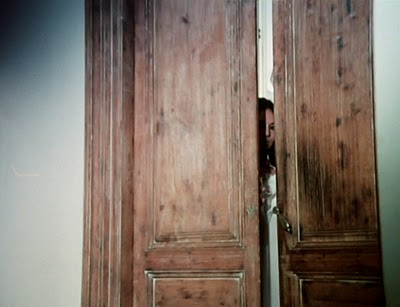
In an interesting display of Greco-Turkish friendship, visitors from the Greek mainland joined with locals in the coastal Aegean village of Yagcilar as they gathered to watch bulldozers and men with shovels move in on the former home of a Greek Orthodox priest.
Under normal circumstances the demolition of a holy man’s home and the excavation of his garden would have prompted political commentary, but in this case the events had been arranged collaboratively by the current Turkish landowners, the great grandchildren of the exiled priest, the Ministry for Culture and Antiquities, and the governor of the district of Urla.
The aim of the excavators was to uncover 400 kilograms of gold and money buried in the garden in the mid-1920s for safekeeping. It had been entrusted to the priest by his religious community as they found themselves forced to evacuate Greece in the exchange of population that took place at the time.
The tip on the whereabouts of the treasure came from a diary entry found by the priest’s descendents, in which he indicates that he hid the money on the grounds of his house. After three days of searching, nothing but dirt was unearthed, leaving the treasure hunters with suspicions that the priest may have protected the treasure with a special spell.
In desperation, Turks called in a well known local hoca, a local religious leader, to pray at the site. Eyyup Hoca directed the operation to new areas to in which to dig and, with the second excavation attempt coming out empty-handed, he announced that jinn (fairies or imps) had changed the hiding place of the money every 41 years since the date of its burial. This was accepted as a reasonable explanation, and the quest continues.
The concept and existence of jinn is widely accepted in Islam. God is said to have created the jinn before humans from “hot wind” and “smokeless fire”, and some jinn are Muslim. Like humans they were invested with intellect, discrimination, freedom and the power to choose between right and wrong. They live all over earth on a separate plane of existence from man and cannot easily be seen, though they are often thought to take the shape of snakes and black dogs.
It is believed that some areas are particularly attractive to jinn - deserts, ruins and places of impurities such as dunghills, bathrooms and graveyards - but jinn can quite easily live alongside humans in their homes.
{ Asia Times | Continue reading }
asia, mystery and paranormal, weirdos |
November 24th, 2010

Have you ever heard a song on the radio that you recognize but you can’t pinpoint the name of the song? (…) It is common for people to recognize a song but how much or how little of the song do you need to hear to recognize it? Do you think you could recognize a song if you just heard a fragment of the song, the rhythm or if you just heard the notes played for you without any rhythmic information?
Kostic and Clearly conducted four different experiments to understand what parts of a song are essential for you to remember hearing it. (…)
The findings from this study reveal that there really is not just one aspect of a song that makes you recognize it as familiar. You can hear a distorted fragment of a song and recognize it. You can hear just the notes of the song played in order and recall that you heard the song before. You can hear the rhythm of the song and still remember it. Finally, you could hear the notes of a song played at a different speed and still recognize it. This speaks to the variety of things we attend to when we are listening to a song.
{ Cognition & the Arts | Continue reading }
sculpture { Iñigo Manglano-Ovalle, Cloud Prototype No.1, 2003 | fiberglass and titanium alloy foil }
music, science |
November 24th, 2010





